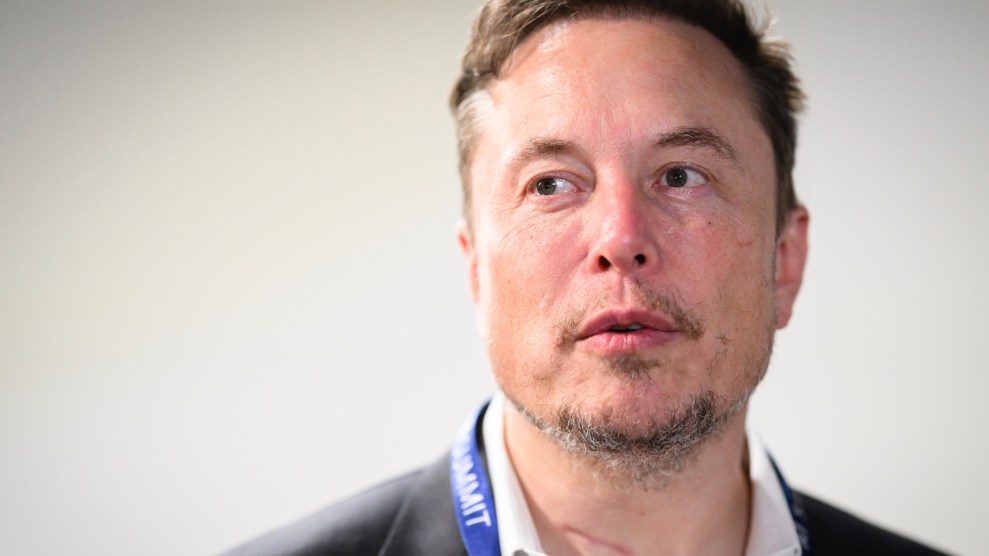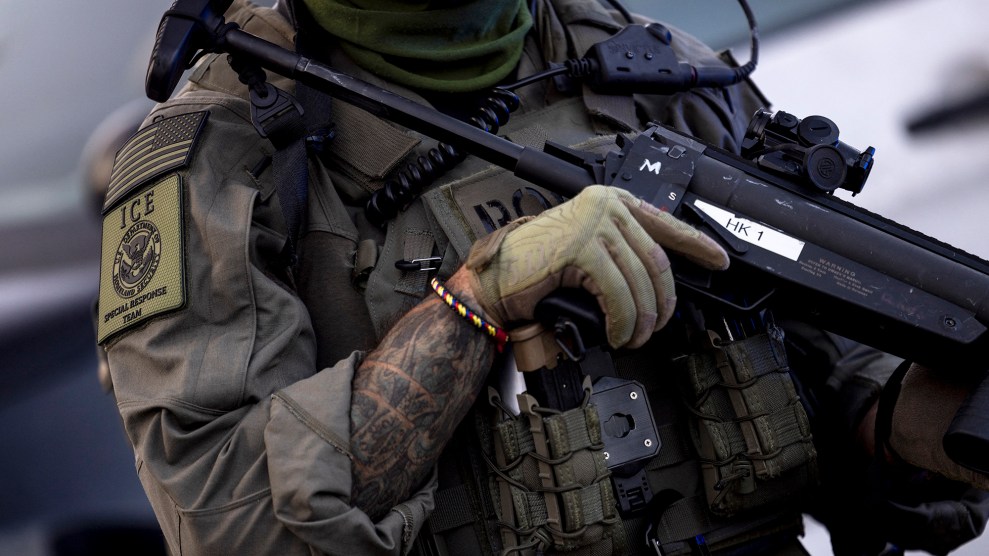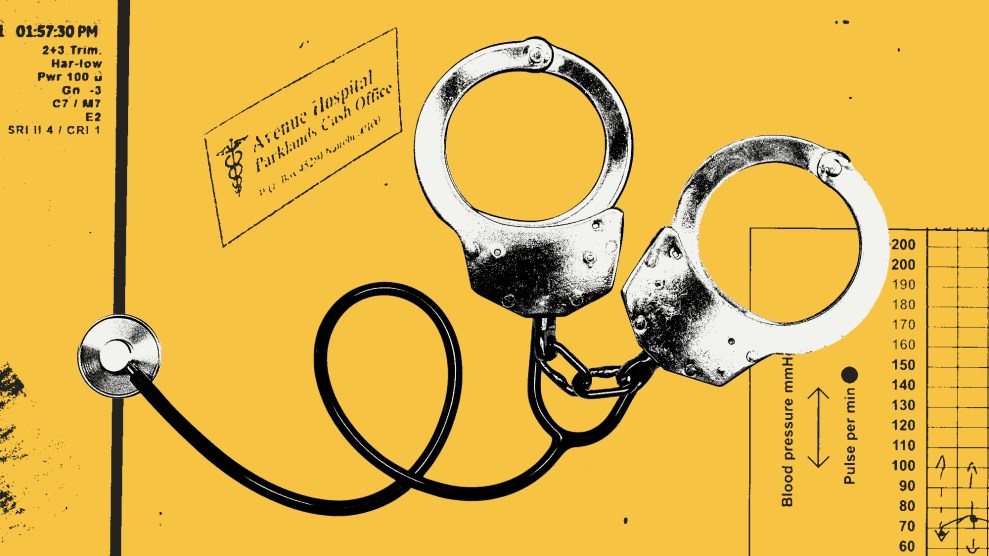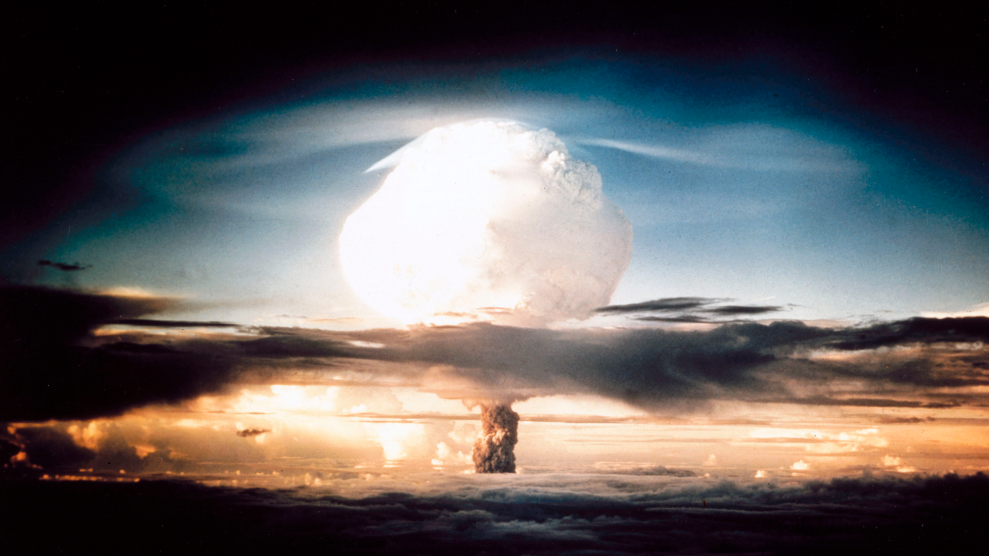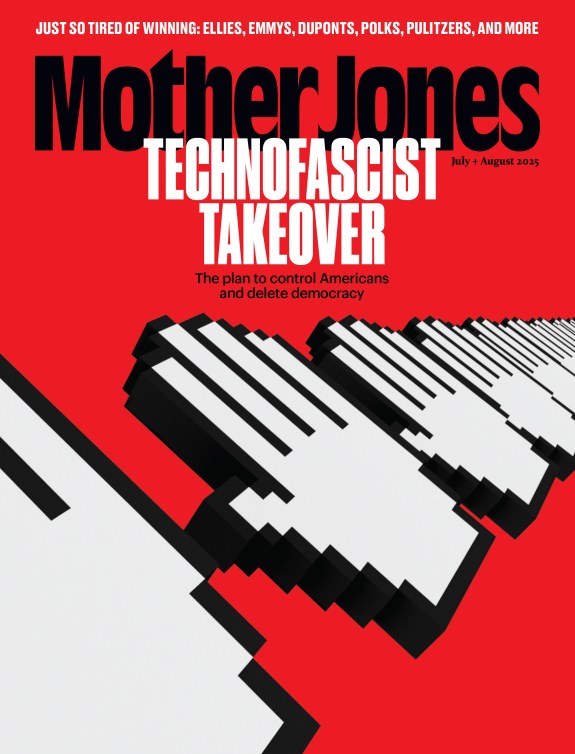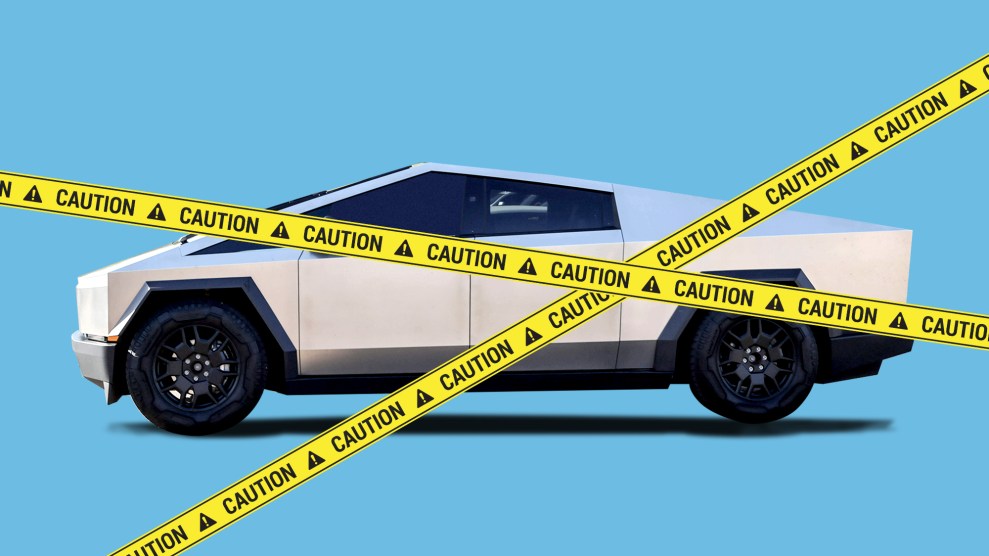
Mother Jones illustration; Alexandra Buxbaum/Sipa USA/AP
Elon Musk’s Cybertrucks may look indestructible: hulking blocks of aluminum and steel that appear to be better suited for a space station than a parking spot on a narrow city street. But a new report suggests that they’re actually deadlier than one of the most infamous—and flawed—American cars ever made: the Ford Pinto.
An analysis published Thursday by the auto news website FuelArc found that, in their one year of existence, the approximately 34,000 Cybertrucks on the roads had five fire fatalities, giving them a fatality rate of 14.5 per 100,000 units. That’s 17 times the fatality rate of the Ford Pintos, whose famously flawed gas tank design on the car’s rear end led to 27 reported fire fatalities in its nine years on the road, resulting in a fatality rate of 0.85 per 100,000 units, according to FuelArc.
The authors of the Cybertruck analysis openly acknowledge caveats in their methodology. First off, Tesla—the car’s manufacturer and one of Musk’s companies—has not confirmed how many Cybertrucks it has sold. FuelArc puts its best guess at 34,438, based on “a variety of means, including piecing together public reporting.” Secondly, the five Cybertruck fatalities include the one that occurred in Las Vegas last month outside Trump International Hotel, when an Army soldier fatally shot himself before the car, packed with fireworks, exploded. Musk claimed in a post on X that the explosion was “unrelated to the vehicle itself.” Thus, the FuelArc analysis acknowledges that this fatality is “controversial” since the driver’s cause of death was reportedly a self-inflicted gunshot wound, and the burns occurred after his death.
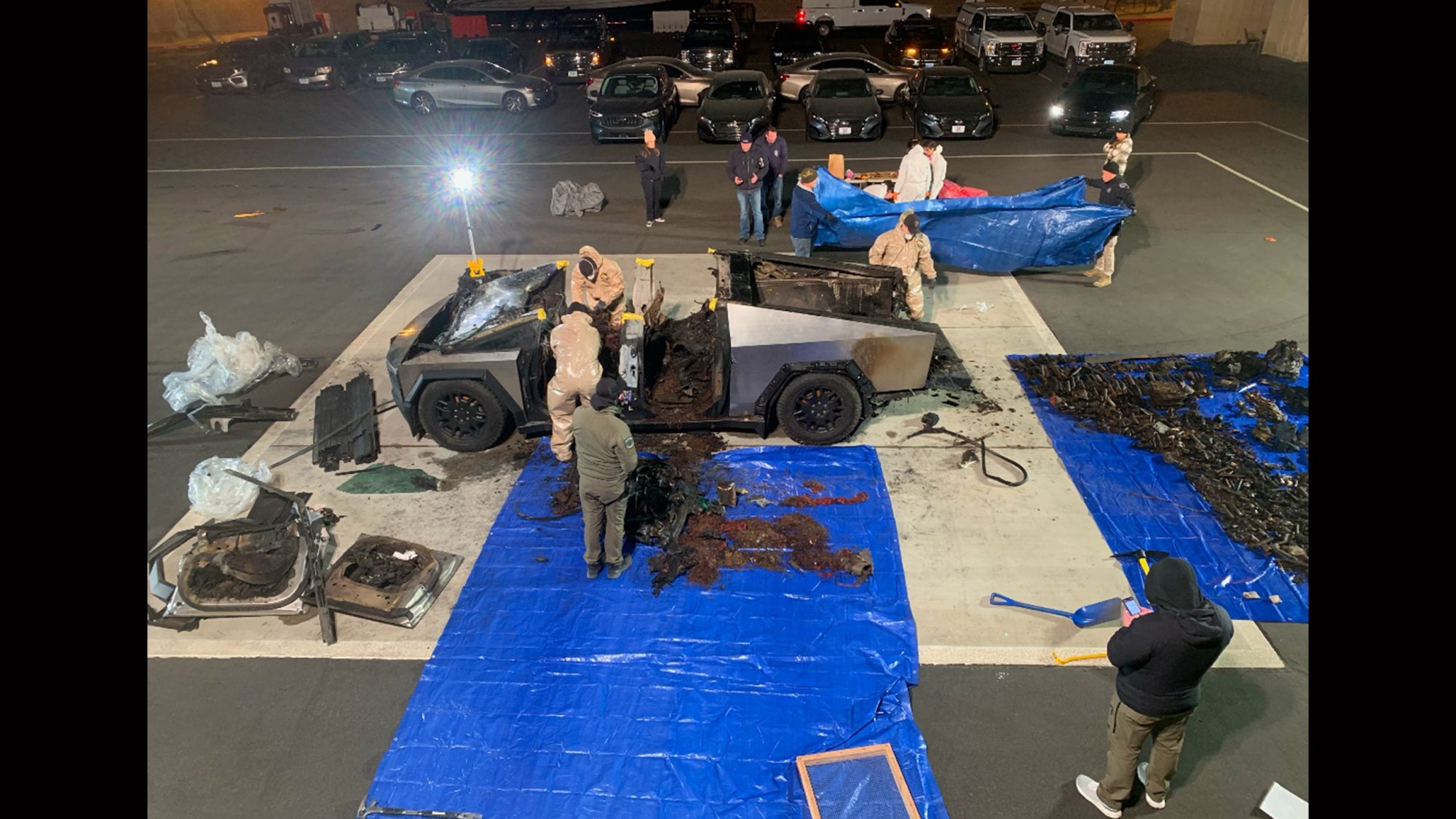
The other Cybertruck fatalities included in the analysis were the ones that took place in December in Piedmont, California, which killed three college students and left one injured, and in Texas last August, which reportedly—at least initially—left the victim unidentifiable due to severe burns. (The Texas Department of Public Safety did not immediately respond to an email Sunday seeking updated information on the victim’s identity.) The National Highway Traffic Safety Administration (NHTSA) previously said it was seeking information from Tesla in both incidents; a spokesperson for the agency did not immediately respond to questions on Sunday.
A spokesperson for Tesla also did not immediately respond to questions.
The point of comparison in the analysis, though—the Ford Pinto fatalities—is a strong, and telling, one. In a classic Mother Jones cover story from 1977, reporter Mark Dowie spent six months investigating the deadly Ford Pintos and found that the company rushed to create and distribute the cars to beat the competition—despite the fact that testing showed that the Pinto was unsafe as designed, due to the flawed placement of the gas tank:
Mother Jones has studied hundreds of reports and documents on rear-end collisions involving Pintos. These reports conclusively reveal that if you ran into that Pinto you were following at over 30 miles per hour, the rear end of the car would buckle like an accordion, right up to the back seat. The tube leading to the gas-tank cap would be ripped away from the tank itself, and gas would immediately begin sloshing onto the road around the car. The buckled gas tank would be jammed up against the differential housing (that big bulge in the middle of your rear axle), which contains four sharp, protruding bolts likely to gash holes in the tank and spill still more gas. Now all you need is a spark from a cigarette, ignition, or scraping metal, and both cars would be engulfed in flames. If you gave that Pinto a really good whack—say, at 40 mph—chances are excellent that its doors would jam and you would have to stand by and watch its trapped passengers burn to death.
This scenario is no news to Ford. Internal company documents in our possession show that Ford has crash-tested the Pinto at a top-secret site more than 40 times and that every test made at over 25 mph without special structural alteration of the car has resulted in a ruptured fuel tank. Despite this, Ford officials denied under oath having crash-tested the Pinto.
That Mother Jones report prompted the NHTSA to undertake an investigation. Ford recalled more than 1.5 million of the cars the following year, and stopped producing the cars entirely by 1980. The company was also accused of reckless homicide over the safety concerns, but a jury acquitted them.
Still, all in all, it’s not a favorable comparison for the Cybertruck.
There are other reasons, beyond the latest analysis, to be skeptical of the car’s safety, though: The NHTSA only recently crash-tested the Cybertruck, according to a spokesperson for the agency, who added that the results will publish online when the analysis is complete. The nonprofit Insurance Institute for Highway Safety has reportedly not crash-tested it, nor has Tesla released its own safety data on the Cybertruck.
Musk bragged around the time of its release that it would “be much safer per mile than other trucks.” But his claims of superiority were quickly disproven, given that Tesla recalled the truck seven times last year alone—an astonishingly high amount—including once over a trapped accelerator pedal that could increase the risk of a crash, estimated to affect more than 3,800 units, according to the NHTSA.
Correction, Feb. 9: An earlier version of this story mistakenly characterized the fatality rate of Cybertrucks as a percentage rather than as a rate per 100,000 units.
Update, Feb. 12: This piece was updated to acknowledge that the National Highway Traffic Safety Administration reported recently crash-testing the Cybertruck.



